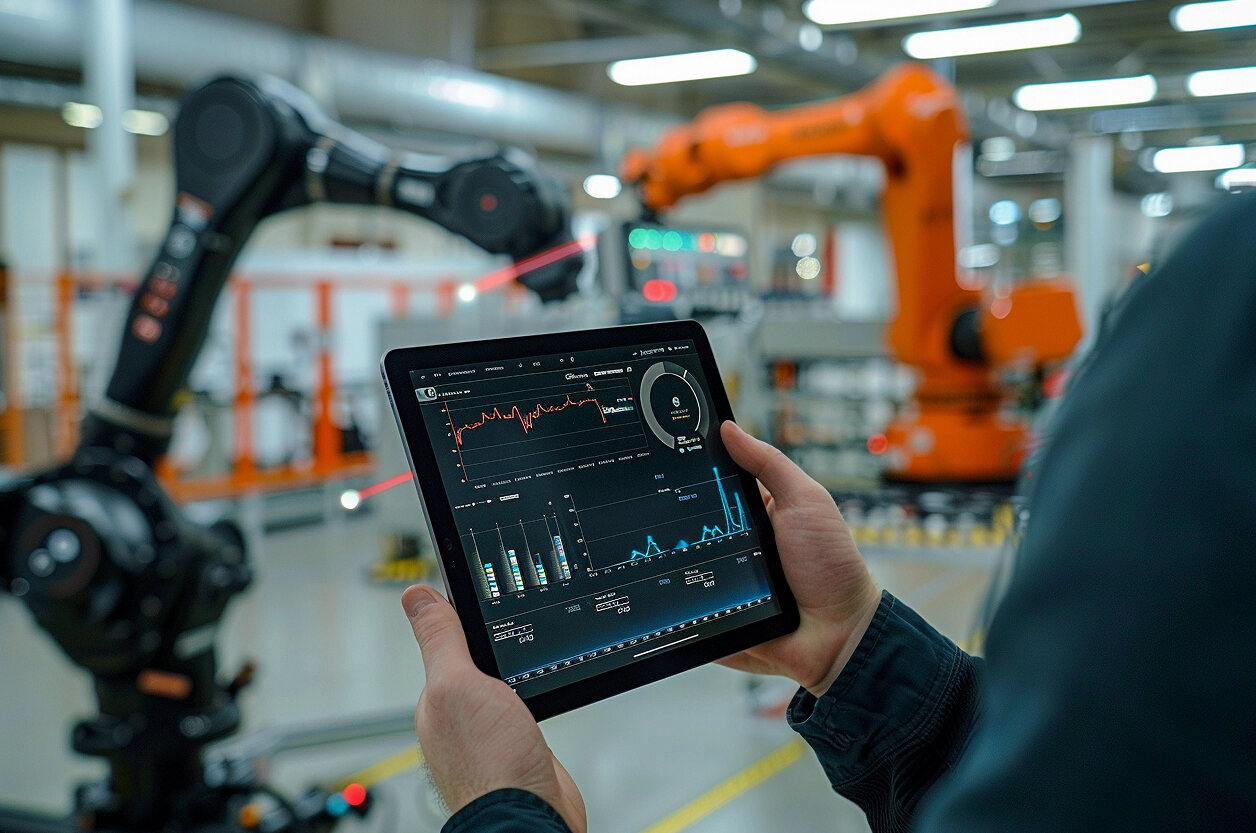Edge-Native Zero-Trust Architectures for Industrial IoT: Securing the Perimeterless Factory

Industrial IoT (IIoT) has transformed how factories, power grids, and logistics systems operate. Thousands of sensors, gateways, and controllers now form intelligent, interconnected ecosystems. But this connectivity comes with a price: every device, connection, and software update can become a breach point.
In traditional networks, security relied on the perimeter—firewalls, VPNs, and segmentation. Once a device was “inside,” it was trusted by default. In today’s distributed, cloud-integrated industrial environments, that model no longer holds. The edge has no fixed boundary. Devices connect directly to cloud services, partners, and even remote operators.
Enter the edge-native zero-trust architecture (ZTA) — a paradigm where no device, user, or process is trusted by default, even inside the factory network. This article explores how zero-trust is evolving for IIoT, how it integrates with embedded edge devices, and what challenges and solutions define its industrial adoption in 2025 and beyond.
Why zero trust must move to the edge
Zero trust was originally a data center and enterprise IT concept, focusing on user authentication, microsegmentation, and policy-based access control. But in industrial environments, security needs differ:
- Devices are often unattended and deployed for decades.
- Networks include legacy protocols (Modbus, PROFINET, CAN) without built-in encryption.
- Downtime can disrupt production, safety, or critical infrastructure.
Traditional zero-trust frameworks don’t map cleanly onto these constraints. Industrial systems need edge-native zero trust — an adaptation that embeds trust evaluation directly into devices and local networks.
In this model, the edge node itself becomes a security decision point, performing identity checks, behavioral monitoring, and data validation before allowing communication with the rest of the system.
Core principles of edge-native zero trust
- Never trust, always verify – every device, service, and user must authenticate continuously, not just once.
- Least-privilege access – edge devices are granted minimal access to perform specific, time-bound tasks.
- Microsegmentation at the edge – instead of flat industrial networks, each subsystem (robot, controller, or gateway) is isolated and protected via encrypted communication channels.
- Continuous monitoring – machine learning at the edge detects deviations in traffic patterns or firmware behavior.
- Adaptive policies – identity and access rules evolve dynamically based on context, workload, or risk posture.
When applied to IIoT, these principles result in systems where each connection is cryptographically validated, each process is verified, and each firmware module is signed and attested before execution.
Architecture of a zero-trust industrial edge
An edge-native zero-trust stack typically includes:
- Root of Trust (RoT): hardware-anchored identity (TPM, TrustZone, or Secure Element) establishing a unique cryptographic identity per device.
- Policy Engine: defines and enforces who or what can communicate within or outside the device’s subnet.
- Identity Broker: manages certificates, tokens, and federated credentials across distributed nodes.
- Secure Communication Layer: TLS 1.3 or DTLS-encrypted channels between sensors, gateways, and controllers.
- Runtime Attestation: continuous integrity checks to verify firmware and software authenticity.
- Anomaly Detection Agent: AI-driven models deployed locally to detect unusual communication patterns or control commands.
Edge-native ZTA thus merges cybersecurity and operational reliability, aligning with IEC 62443, NIST SP 800-207, and ISO 21434 standards — all adapted for industrial contexts.
Example: Zero-trust in a connected factory
Consider a robotic cell inside a modern factory:
- A PLC requests sensor data from a vibration module.
- Before responding, the sensor authenticates the PLC using a hardware-bound key.
- The PLC’s communication is checked against an allowlist defined in the policy engine.
- Data is encrypted end-to-end, with each packet signed to prevent replay.
- If the PLC starts sending abnormal requests, the local gateway detects the anomaly and isolates it automatically.
All this happens autonomously at the edge — without needing to route every packet through a cloud or central security system.

Integration with legacy systems
One of the hardest challenges in IIoT is that most industrial assets weren’t designed for zero trust. They run on deterministic, low-latency networks with fixed-function controllers. Retrofitting such systems requires security overlays, such as:
- Protocol gateways that add authentication and encryption layers to legacy devices.
- Digital twins that replicate old device behavior, applying modern access controls around them.
- Edge firewalls and secure routers that segment traffic zones between old and new equipment.
Vendors like Siemens, Schneider Electric, and Cisco have already introduced zero-trust-ready gateways that enable such hybrid deployments.
Role of embedded hardware and firmware
Edge-native ZTA depends heavily on secure embedded design:
- Hardware root of trust: enables cryptographic device identity and secure boot.
- Firmware signing: ensures that only verified software can run.
- On-device policy enforcement: lightweight security agents evaluate connection requests locally.
- AI-assisted monitoring: local models learn “normal” operation and detect anomalies faster than cloud-based systems.
Promwad and other engineering firms are now embedding these features directly into industrial gateways, PLCs, and sensor nodes — making security intrinsic rather than an afterthought.
Industrial protocols meet zero trust
Integrating zero-trust principles with deterministic industrial protocols like EtherCAT, PROFINET, and OPC UA requires new approaches:
- Time-sensitive networking (TSN) adds deterministic scheduling and isolation capabilities.
- OPC UA security profiles introduce certificate-based authentication and encryption.
- EtherCAT + MACsec integration allows cryptographically verified real-time communication.
These enhancements make it possible to apply microsegmentation and identity validation even in sub-millisecond latency systems.
Edge orchestration and trust fabrics
As industrial networks scale, manual configuration of trust rules becomes impractical. Edge-native orchestration platforms are emerging to automate ZTA deployment:
- Policy orchestration: automatically propagates rules to gateways and endpoints.
- Device attestation services: continuously validate firmware and identity states across fleets.
- Secure service meshes: use sidecar proxies to manage communication and authentication dynamically between workloads.
The combination of orchestration and embedded identity creates a “trust fabric” — a distributed layer of security running natively across the industrial edge.
Real-world adoption and benefits
Zero-trust edge architectures are already being piloted in several industrial sectors:
- Energy grids: substation gateways use ZTA to isolate control commands and prevent cascading failures.
- Smart factories: edge controllers validate every network flow, minimizing lateral movement of malware.
- Rail and transport systems: OTA updates and telemetry data are verified per node to prevent spoofing or tampering.
The results include up to 70% fewer attack surfaces, improved visibility of lateral threats, and enhanced regulatory compliance (especially under NIS2 and IEC 62443 frameworks).
Challenges and limitations
Despite its benefits, edge-native zero trust introduces challenges:
- Latency overhead due to continuous authentication.
- Complex policy management across heterogeneous equipment.
- Legacy compatibility when secure boot or identity modules aren’t available.
- Operational disruption risks if verification fails mid-process.
To mitigate these, organizations are adopting tiered trust models — combining local, network, and cloud trust policies that can degrade gracefully in case of failure.
Outlook: from factories to ecosystems
By 2030, industrial ecosystems will no longer be siloed factories — they’ll be interconnected trust domains where suppliers, logistics operators, and maintenance providers exchange data securely.
Edge-native zero trust will be the foundation of this transformation. With 5G, TSN, and AI-based anomaly detection integrated into edge devices, each node will act as both a producer of data and a guardian of trust.
As more hardware vendors embed roots of trust and cryptographic accelerators directly into microcontrollers, zero-trust compliance will become a baseline capability, not an optional feature.
The result: self-defending industrial networks capable of isolating, mitigating, and recovering from cyber threats in real time — without sacrificing productivity or uptime.
AI Overview: Edge-Native Zero Trust for IIoT
Edge-Native Zero Trust — Overview (2025)
Edge-native zero-trust architectures bring dynamic, identity-driven protection directly to industrial networks. Instead of relying on centralized firewalls, every edge node enforces its own authentication, encryption, and behavioral checks — securing factories, robots, and energy systems from within.
- Key Applications: industrial automation, energy grids, manufacturing robotics, OT-IT gateways, predictive maintenance systems.
- Benefits: real-time isolation of threats, reduced attack surface, compliance with IEC 62443/NIS2, resilience against insider attacks.
- Challenges: managing trust policies at scale, ensuring deterministic performance, integrating legacy assets.
- Outlook: by 2030, self-verifying, edge-native trust fabrics will form the backbone of secure industrial automation.
- Related Terms: zero-trust architecture, industrial cybersecurity, trusted execution, secure edge gateways, policy-based access control, hardware root of trust.
Our Case Studies





